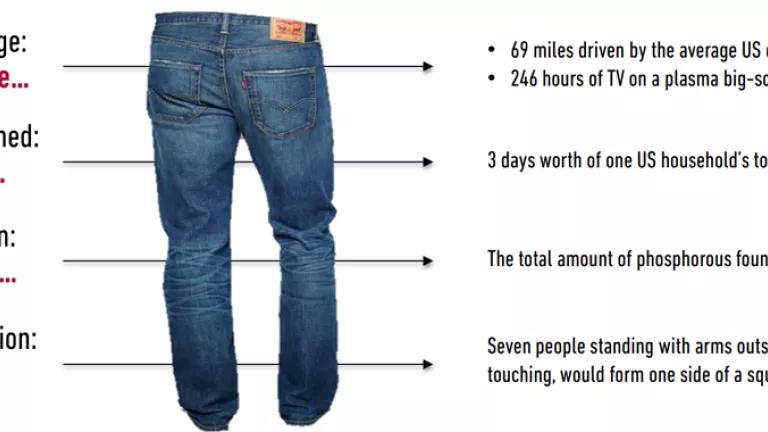
Earth Day isn't generally viewed as a gift-giving holiday like Christmas or Valentine's Day, but maybe it should be. After all, what shows that you care about someone more than a multi-pack of energy efficient LED lightbulbs that can help save their planet and money, too?
Celebrating Earth Day, April 22nd, the same way we observe birthdays and other gifting holidays isn't an entirely irrational idea. "Environmental" gifts could range from the comparatively inexpensive LEDs (pdf) (now less than $3 per bulb when bought in a multi-pack) to a new bicycle for doing errands around town—and all the way up to pricier options like having new solar panels installed.
If we all gave each other enough LEDs to fill America's estimated 3 billion light sockets that still contain an inefficient bulb, the NRDC estimates the entire nation could save about $12.5 billion on its collective electric bill every year. Although these bulbs are slightly more expensive, they last 10 to 25 years and avoid the hassles of annual bulb changes.
Another thoughtful gift could be solar-power yard lights that illuminate driveways and sidewalks after the sun goes down. Solar lights spend the day soaking up sunshine and turn on automatically after dark. They're a gift that's both functional and decorative—and they don't increase your energy bill.
But if lighting improvements aren't what you had in mind, there are lots of other Earth-friendly gifts that can bring a smile to the recipient's face—and wallet.
Let's start with TVs and the devices connected to them:
Stream smart
If your family or friends likes to binge-watch shows with services like Netflix and Amazon Prime, make sure they don't use an Xbox or PlayStation to stream them. They can use 25 or more times more power than a streaming device like Apple TV, Roku, or a Google Chromecast to watch the same show. Better yet, a smart, Internet-connected TV can stream content from the Internet directly without the need for any other devices.
Adjust TV settings
Most recently purchased televisions have a feature called Automatic Brightness Control (ABC) that automatically adjusts the screen's brightness depending on how much light there is in the room. If you're watching a movie at night in a dimly lit room, let the TV automatically turn down the brightness—it will use less power (but won't change the ending of the movie). Disabling ABC can lead to some TVs using a whopping 50 percent more power.
Update cable or satellite television set-top boxes
Until recently pay TV providers like Comcast and Dish Network installed a DVR on each television to record a show and watch it later. But now all the cable and satellite companies have a solution that can dramatically reduce your household's set-top box energy use: a single, whole home DVR on your main TV and low energy-consuming boxes called thin clients on your second and third televisions. In some cases, this can cut your annual electric bill by roughly $50. If you have multiple DVRs, turn the extra ones back in to your pay TV provider and request a multi- room DVR. And if you're signing up for new service, request a box that meets ENERGY STAR® Version 4.1 because they use a lot less energy.
If saving water and money is more your thing:
Install water-saving aerators for the kitchen and bathroom sinks
Water-saving aerators can be found at home improvement stores for less than $5 and quickly pay for themselves in lower water and energy bills. They can cut water waste by 40 percent. Choose an aerator for the kitchen that allows water to flow at no more than 1.8 gallons per minute, and get bathroom sink aerators that bring the flow down to 1.2 gallons per minute.
Don't pre-wash or hand-wash dishes
New dishwashers use just 3 to 4 gallons of water to clean an entire load after you've scraped off food. It takes far more water to pre-wash or hand-wash dishes (the average faucet uses 2 gallons of water or more per minute).
Get the flow low
Especially if you're in a water-starved area, consider a new low-flow toilet with the Water Sense label. Older toilets require as much as 5 gallons of water per flush. New ones use as little as 1.28 gallons for each flush—and work just as well or better. It also means that thousands of gallons of clean water that could be used for drinking won't be going down the toilet every year instead.
A word about filters
Appliances like clothes dryers and furnaces work much more efficiently when their filters are not clogged with lint and dust. Clean the dryer filter before every load, and change out the furnace filter a couple of times each winter.
Everyone can celebrate Earth Day 2016 with these ideas to save energy and water. What better gift could there be than helping to save money and the planet all year-round?



